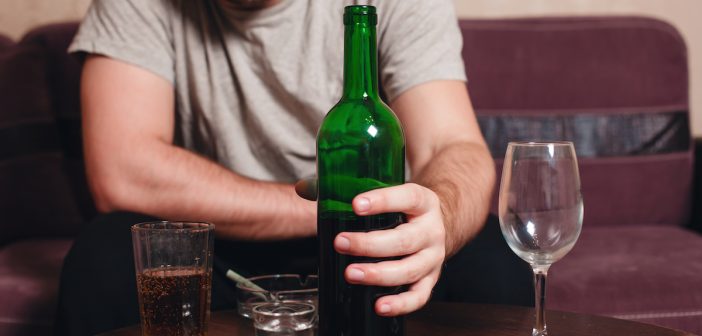India is one of the largest consumers of alcohol in the world, yet the average Indian drinker rarely knows what’s inside their bottle. While glossy ads, colorful labels, and celebrity endorsements make most Indian liquor brands look premium, the truth behind the contents is often far from glamorous. A majority of the so-called “whiskies,” “vodkas,” and “rums” on Indian shelves are not made the traditional way — through distillation of grains, fruits, or molasses and aging in barrels — but are instead created using neutral alcohol (ENA: Extra Neutral Alcohol). This industrial-grade spirit, derived from molasses or grains, is highly processed, extremely potent, and then mixed with flavors, colors, and water to produce what is sold as “whisky” or “rum.”
What is Neutral Alcohol?
Neutral alcohol, or Extra Neutral Alcohol (ENA), is a highly rectified spirit that contains over 95% alcohol by volume. In India, most ENA is derived from sugarcane molasses — a byproduct of the sugar industry. After multiple rounds of distillation, it is stripped of taste, color, and character, leaving behind a pure but highly volatile form of alcohol. Manufacturers use this as a blank canvas to create different kinds of liquor by adding synthetic flavors, caramel coloring, and demineralized water.
Technically, ENA is supposed to be odorless and tasteless, but in reality, due to poor regulation, shortcuts in production, and cheap manufacturing processes, a large portion of Indian ENA-based liquors may contain harmful impurities, including methanol, fusel oils, aldehydes, and esters. While ENA is acceptable in controlled doses for industrial use (like sanitizers, perfumes, and some medicines), its unchecked use in alcohol marketed for human consumption is a growing health concern.
The Difference Between ENA-based Indian Liquor and Authentic Whisky
True whisky, whether Scotch, Irish, American bourbon, or Japanese single malt, is made by fermenting grains (barley, rye, corn, wheat), distilling them, and aging the resulting spirit in oak barrels for several years. The aging process develops the flavor, aroma, and texture that make whisky a rich and nuanced drink.
In contrast, Indian “IMFL” (Indian Made Foreign Liquor) whisky — unless it explicitly says “100% grain whisky” or “single malt” — is usually just ENA mixed with flavorings. This is why many Indian whiskies under ₹1,000 per bottle taste harsh, smell synthetic, and often lead to heavier hangovers and health issues.
How ENA Harms the Body
-
Toxic Impurities: Poorly distilled or unregulated ENA can contain methanol, a dangerous alcohol that even in small quantities can lead to blindness, organ failure, or death. Even low levels of methanol or fusel oils over time can damage the liver, kidneys, and central nervous system.
-
Digestive System Damage: ENA is harsh on the stomach lining. Many chronic drinkers of cheap liquor complain of gastritis, ulcers, or liver inflammation. The high alcohol content in ENA-based spirits also leads to poor absorption of nutrients and damages the gut microbiome.
-
Neurological Effects: Because ENA-based liquors lack the complexity and balance of aged spirits, they often lead to rapid intoxication and a rougher high. This can increase the risk of binge drinking, blackouts, poor impulse control, and long-term cognitive decline.
-
Addiction and Dependency: The rapid onset of intoxication from ENA-based spirits makes them more addictive. People who regularly consume such liquor may find themselves developing tolerance quickly and needing more alcohol to achieve the same effect — a classic symptom of alcohol dependence.
-
Increased Risk of Cancer: All alcohol is a Group 1 carcinogen, but the risk is significantly amplified when the alcohol contains chemical impurities. Chronic exposure to aldehydes and other contaminants in ENA has been linked to increased risk of liver, esophageal, and stomach cancers.
Economic Incentives Behind ENA Usage in India
The widespread use of ENA is driven by profit margins. Producing ENA from molasses is much cheaper than aging real grain or malt whisky. Indian distillers can manufacture and bottle a 750ml ENA-based whisky for under ₹100, then sell it for ₹500 to ₹900 with clever branding. The profit margins are massive, especially since millions of Indians drink daily or weekly.
State governments also benefit from this model, as most Indian states earn huge revenues from alcohol sales. There is little incentive for regulators to crack down on ENA-based liquors, and labelling laws are lax. Most bottles do not clearly disclose whether the spirit is aged, how it is made, or what ingredients are used.
How Authentic Malt Whisky Protects Your Health
-
Natural Ingredients and Distillation: Authentic whiskies use natural grains and spring water. The fermentation and distillation processes are tightly regulated in countries like Scotland and Japan, ensuring high quality and safety.
-
Aging Removes Toxins: Barrel aging is not just for taste. During the years spent in oak barrels, volatile and harmful compounds evaporate or get absorbed by the wood. The resulting spirit is smoother, more balanced, and gentler on the body.
-
Lower Risk of Overconsumption: Due to its price and richness, authentic whisky is sipped, not gulped. This encourages mindful drinking, reducing the likelihood of bingeing and its associated harms.
-
Better Hangovers and Fewer Side Effects: Most hangovers are not from alcohol alone, but from impurities, sugars, and additives. Authentic whiskies, consumed in moderation, produce fewer toxins in the body, leading to milder hangovers and better overall health.
Why Indians Should Shift Their Preferences
India has a growing class of educated, health-conscious consumers. There’s a rising demand for organic food, Ayurvedic wellness, and clean labels in FMCG products. Yet, when it comes to alcohol, most consumers are unaware or indifferent about the contents. This needs to change.
-
Demand Better Labelling: Indian consumers must push for mandatory disclosure of ingredients and alcohol sources. A bottle labeled “whisky” should legally be required to contain a minimum percentage of aged grain spirit.
-
Choose Quality Over Quantity: Instead of drinking half a bottle of ENA whisky for ₹600, invest in a ₹1,500–₹2,000 bottle of single malt or blended scotch and drink slowly. Quality alcohol provides better taste, safety, and satisfaction with far less risk.
-
Educate Yourself and Others: Many young adults in India are entering the drinking culture through cheap vodka, rum, and whisky. Introducing them to real spirits and the joy of sipping over gulping can create healthier drinking habits.
-
Support Craft Indian Distilleries: A growing number of Indian brands now make real single malts and artisanal gin using local ingredients. Brands like Amrut, Paul John, and Rampur have won international acclaim. Supporting them encourages transparency, craftsmanship, and local pride.
-
Resist Fake Luxury: Many Indians fall for packaging that mimics international brands. A bottle with a Scottish-sounding name sold for ₹500 is not the same as real whisky. Authenticity lies in the process, not the name.
Conclusion: Sip Smart, Live Long
Drinking alcohol is a personal choice, but it must be an informed one. The illusion of drinking “foreign liquor” from Indian brands that are made of industrial-grade ENA can cost Indians their health, dignity, and long-term well-being. It’s time to move beyond status symbols and explore authentic, safer, and richer alcohol experiences. If you choose to drink, choose quality. Choose malt. Choose health over hype. And most importantly, demand that your bottle tells the truth — not just through its label, but through how it treats your body the next day.






